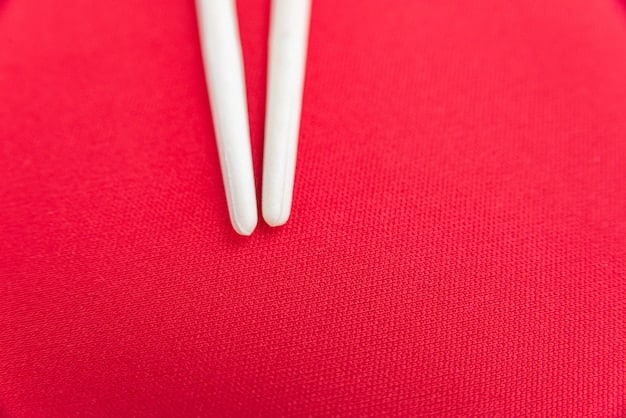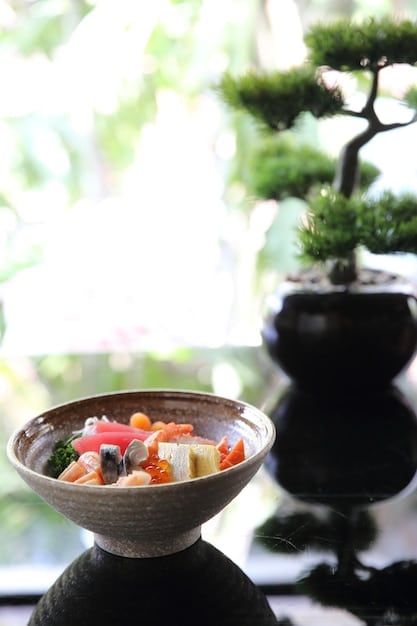Japan Etiquette 2025: A US Traveler’s Guide to Cultural Success

Navigating Japan’s etiquette in 2025 requires understanding unique customs to ensure respectful and smooth interactions, ranging from bowing and chopstick usage to gift-giving and public behavior, crucial for US travelers seeking a culturally enriching experience.
Embarking on a journey to Japan in 2025 promises a captivating blend of ancient traditions and modern marvels. To truly embrace this experience, understanding and respecting the local customs is paramount. This guide to **Japan’s Etiquette Essentials: A US Traveler’s Guide to Avoiding Cultural Missteps in 2025** will equip you with the knowledge to navigate social situations with grace and avoid unintentional faux pas.
Understanding Japanese Culture and Etiquette
Japan’s culture is deeply rooted in respect, harmony, and social etiquette. These values permeate every aspect of daily life, from greetings and dining to public transportation and business interactions. For US travelers, a basic understanding of these cultural nuances is essential for a smooth and enriching experience.
The Importance of Harmony and Respect
Harmony, or “wa” (和), is a cornerstone of Japanese society. Maintaining a peaceful and cooperative atmosphere is highly valued, influencing interactions and decision-making processes. Showing respect for others, their belongings, and their space is vital.
Indirect Communication
Japanese communication is often indirect and subtle, relying heavily on context and non-verbal cues. Expressing disagreement or direct refusal can be seen as impolite. Pay attention to body language, tone of voice, and implicit meanings. Learning to “read the air” (kuuki wo yomu) is a valuable skill.

Japanese culture extends far beyond common misconceptions that many people have as well. It’s very important to understand them before visiting the country.
- Bowing: Bowing is a traditional greeting and gesture of respect. The depth of the bow indicates the level of respect.
- Silence: Silence can be golden in Japan. Avoid being overly boisterous or loud, especially in public spaces.
- Cleanliness: Japan is known for its cleanliness. Help maintain this by disposing of trash properly and avoiding littering.
- Punctuality: Being on time is crucial in Japan. Arriving late for appointments or events is considered disrespectful.
By understanding these core cultural values, US travelers can demonstrate respect and foster positive interactions during their visit to Japan.
Mastering Basic Japanese Greetings
Greetings are fundamental to any culture, and Japan is no exception. Knowing a few basic Japanese greetings can significantly enhance your interactions with locals and show your respect for their culture. While many Japanese people in tourist areas may speak some English, attempting to use Japanese will be greatly appreciated.
Essential Phrases
Here are some essential Japanese greetings to incorporate into your vocabulary:
- Konnichiwa (こんにちは): Good afternoon/hello (general greeting). Commonly used during the daytime.
- Ohayo Gozaimasu (おはようございます): Good morning (formal). Use “Ohayo” in casual settings with friends.
- Konbanwa (こんばんは): Good evening. Used after sunset.
- Arigato Gozaimasu (ありがとうございます): Thank you (formal). A simple “Arigato” is less formal.
- Sumimasen (すみません): Excuse me/I’m sorry. This versatile phrase is used for apologizing, getting someone’s attention, or expressing gratitude for a small favor.
- Hajimemashite (はじめまして): Nice to meet you (for the first time). Followed by your name.
- Yoroshiku Onegaishimasu (よろしくお願いします): Pleased to meet you/Please treat me well. Often said after “Hajimemashite.”
These are some other common phrases visitors may want to be familiar with.
Proper Usage and Pronunciation
Pay attention to pronunciation. While native speakers don’t expect perfection, demonstrating effort shows sincerity. Using a translation app can be helpful, but try practicing beforehand. Also, be mindful of the formality level. “Gozaimasu” adds a level of politeness suitable for formal situations or strangers. While body language matters, it’s important to take precautions.
- Bowing while greeting: Combine the verbal greeting with a slight bow to show respect, especially when meeting someone for the first time or interacting with older individuals.
- Eye contact: Prolonged direct eye contact can sometimes be perceived as confrontational. A softer gaze is generally preferred.
- Smiling: Smiling is universally understood as a sign of friendliness and warmth.
By mastering these basic greetings and understanding the nuances of their usage, US travelers can make a positive first impression and build stronger connections with Japanese people.
Navigating Dining Etiquette in Japan
Dining in Japan is not just about the food; it’s an experience steeped in tradition and etiquette. Mastering a few key dining customs can significantly enhance your enjoyment and ensure you show respect for the host and fellow diners. From chopstick usage to table manners, understanding these nuances is crucial.
Chopstick Etiquette (Hashi)
Chopsticks (hashi) are an integral part of Japanese dining. Here are some essential “do’s and don’ts”:
- Do: Use the chopstick rest (hashioki) when not using your chopsticks.
- Do: Hold chopsticks towards the end, not in the middle or near the eating end.
- Don’t: Stick chopsticks upright in a bowl of rice, as this resembles a funeral ritual.
- Don’t: Pass food directly from your chopsticks to someone else’s, as this also resembles a funeral ritual. Instead, place the food on their plate.
- Don’t: Spear food with your chopsticks.
- Don’t: Wave or point with your chopsticks.
- Don’t: Lick your chopsticks.
- Don’t: Rub chopsticks together; this implies you believe the chopsticks are cheap.
Table Manners
Good table manners are highly valued in Japan. Here are some basic guidelines:
- Say “Itadakimasu” (いただきます) before eating: This phrase expresses gratitude for the meal.
- Say “Gochisosama deshita” (ごちそうさまでした) after eating: This expresses gratitude for the meal.
- Chew with your mouth closed: Avoid talking with food in your mouth.
- Slurping noodles is acceptable: It’s believed to enhance the flavor and shows enjoyment.
- Finish your rice: Leaving rice in your bowl is considered wasteful.
- Pour drinks for others: It’s customary to pour drinks for your companions and allow them to reciprocate. Don’t pour your own drink.

Before leaving a tip, many people are curious about tipping culture in Japan.
Tipping Culture
Tipping is generally not expected or customary in Japan. In fact, attempting to tip may cause confusion or even offense. Excellent service is considered standard, and staff are well-compensated. There are some exceptions, such as when receiving highly personalized service from a Ryokan, a traditionally high end Japanese hotel.
By familiarizing yourself with these dining etiquette guidelines, US travelers can navigate Japanese meals with confidence and demonstrate respect for local customs.
Gift-Giving Etiquette (Omiyage)
Gift-giving, or “omiyage” (お土産), is an important aspect of Japanese culture, particularly when returning from a trip. It’s a way of sharing your experiences and showing appreciation to colleagues, friends, and family. Understanding the nuances of omiyage etiquette is essential for US travelers.
Choosing the Right Gift
When selecting a gift, consider the following:
- Local specialties: Omiyage are typically local specialties or regional products from your travel destination.
- Individually wrapped items: Opt for individually wrapped treats, as they are easy to distribute among a group.
- Presentation matters: Presentation is important. Choose nicely packaged gifts.
- Avoid overtly expensive gifts: Extremely extravagant gifts can create a sense of obligation.
The Art of Giving and Receiving
The act of giving and receiving gifts is also governed by specific etiquette:
- Present the gift with both hands: This shows respect and sincerity.
- Offer a modest disclaimer: Say something like “Trivial, but…” or “This is nothing special, but…” to avoid appearing boastful.
- Gifts are often refused initially: The recipient may initially decline the gift out of politeness. Offer it again gently.
- Don’t open the gift immediately: Unless encouraged to do so, wait until later to open the gift, as opening it immediately can seem greedy.
Omiyage is a symbol of gratitude for those who shared responsibilities while the traveler was away.
Occasions for Gift-Giving
Besides returning from a trip, there are other occasions when gift-giving is customary:
- Visiting someone’s home: Bring a small gift, such as sweets or fruit.
- Business meetings: Exchanging business cards is common.
- Special occasions: Birthdays, weddings, and holidays are also occasions for gift-giving.
By understanding the etiquette surrounding omiyage, US travelers can participate in this cultural tradition with grace and thoughtfulness.
Understanding Public Transportation Etiquette
Japan boasts an efficient and extensive public transportation system, including trains, subways, and buses. However, using public transportation requires adhering to specific etiquette guidelines to ensure a comfortable and respectful experience for all passengers. For US travelers, understanding these rules is key.
On Trains and Subways
Here are some important etiquette considerations for trains and subways:
- Quiet is key: Maintain a quiet demeanor. Avoid loud conversations, phone calls, or music playing without headphones.
- Priority seating: Priority seats are reserved for the elderly, pregnant women, and people with disabilities. Refrain from sitting in these seats unless you qualify.
- No eating or drinking on local trains: While it is common to eat on long distance trains it is not done on local ones.
- Backpack etiquette: Be mindful of your backpack. Place it on the floor or hold it in front of you to avoid bumping into other passengers.
On Buses
Bus etiquette is similar to that of trains and subways:
- Enter from the rear, exit from the front: In most cases, you enter the bus from the rear door and exit from the front.
- Pay when you exit: You typically pay your fare when exiting the bus.
- Avoid loud conversations: Keep your voice down to avoid disturbing other passengers.
- Offer your seat to those in need: Offer your seat to elderly passengers or those with disabilities.
The goal is to ensure that everyone is comfortable on the train during their commute.
General Public Transportation Tips
Here are some additional tips for navigating public transportation with ease:
- Purchase a Suica or Pasmo card: These rechargeable cards simplify fare payment and can be used on most trains and buses.
- Plan your route in advance: Use a navigation app like Google Maps or a Japan-specific transit app to plan your route and check schedules.
- Be mindful of rush hour: Rush hour can be extremely crowded. If possible, avoid traveling during peak hours (7-9 AM and 5-7 PM).
By respecting these guidelines, US travelers can contribute to a pleasant and orderly environment on Japan’s public transportation system.
Important Considerations for 2025
As Japan continues to evolve, it’s essential for US travelers to stay informed about any changes or emerging trends in etiquette and cultural norms. Planning a trip for 2025 requires considering both traditional customs and contemporary developments.
Changing Social Norms
While traditional etiquette remains important, some social norms are gradually changing:
- Increased acceptance of casual attire: While formal attire is still expected in certain situations (e.g., business meetings), casual clothing is becoming more acceptable in everyday settings. However, avoid overly revealing or sloppy clothing.
- Greater openness to foreign languages: English proficiency is increasing, particularly among younger generations. However, making an effort to speak Japanese is still highly appreciated.
- Relaxation of smoking regulations: While smoking is increasingly restricted in public spaces, designated smoking areas are still common. Be sure to smoke only in designated areas.
Technology and Etiquette
Technology plays an increasingly significant role in daily life. Here are some etiquette considerations related to technology usage:
- Silence your phone: Always silence your phone in public places, particularly on trains and buses.
- Avoid talking on the phone in public: Refrain from making phone calls in crowded areas. If necessary, speak quietly and briefly.
- Be mindful of photography: Ask for permission before taking someone’s picture.
Also be sure to download any necessary translation apps, or apps that can assist with directions ahead of time.
Staying Updated
To ensure you’re up-to-date on the latest etiquette guidelines and cultural norms, consider the following:
- Read travel blogs and articles: Stay informed about current trends and advice from other travelers.
- Consult official tourism websites: Visit the Japan National Tourism Organization (JNTO) website for reliable information.
- Connect with local experts: Reach out to Japanese cultural centers or language schools in your area for insights and advice.
By staying informed and adaptable, US travelers can navigate Japan’s evolving cultural landscape with confidence and sensitivity in 2025.
| Key Point | Brief Description |
|---|---|
| 🙏 Bowing | Shows respect; depth indicates level of formality. |
| 🥢 Chopsticks | Avoid sticking upright in rice; use rest when not in use. |
| 🎁 Omiyage | Local specialty gifts; avoid expensive items. |
| 📱 Public Transport | Silence phone; refrain from loud conversations. |
Frequently Asked Questions
▼
Yes, refusing a gift directly can be seen as impolite. It’s customary to initially decline out of politeness, but then accept it after the giver offers it again. It’s important to show appreciation for the gesture.
▼
Avoid sticking chopsticks upright in rice, passing food directly with chopsticks, or waving them around. Use the chopstick rest when not in use, and hold them towards the end.
▼
No, tipping is generally not expected or customary in Japan. Excellent service is considered standard, and staff are well-compensated. Attempting to tip may cause confusion or even offense.
▼
Maintain a quiet demeanor, silence your phone, and avoid loud conversations. Be mindful of priority seating, and refrain from eating or drinking on local trains. It’s important to be considerate of fellow passengers.
▼
‘Omiyage’ are regional specialty gifts bought while traveling and given to colleagues, friends, or family upon return. They symbolize sharing experiences and showing appreciation, and are an important part of Japanese culture.
Conclusion
By familiarizing yourself with these Japan’s Etiquette Essentials: A US Traveler’s Guide to Avoiding Cultural Missteps in 2025, you’ll significantly enhance your travel experience and foster positive interactions with locals. Embrace these customs with an open mind and a genuine desire to learn, and you’ll find your journey to be not only enjoyable but also deeply enriching. Remember that cultural sensitivity is key to creating memorable and respectful experiences in Japan.





